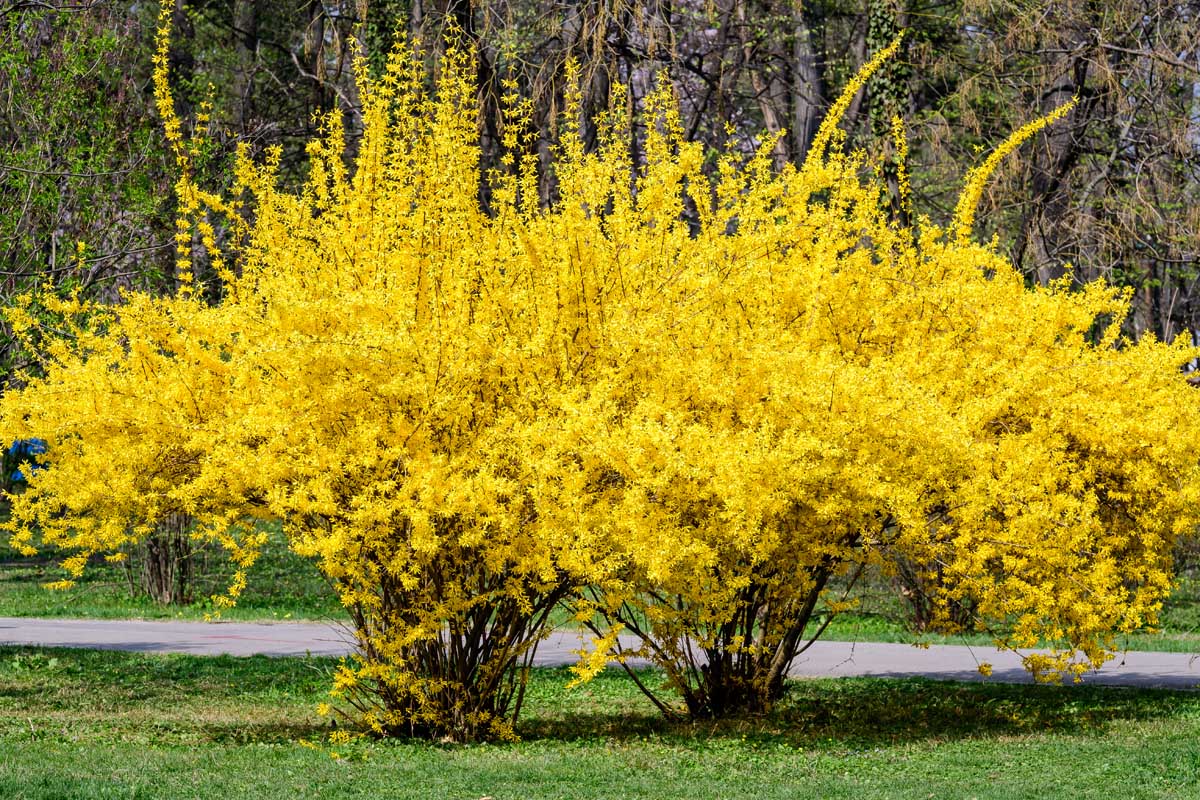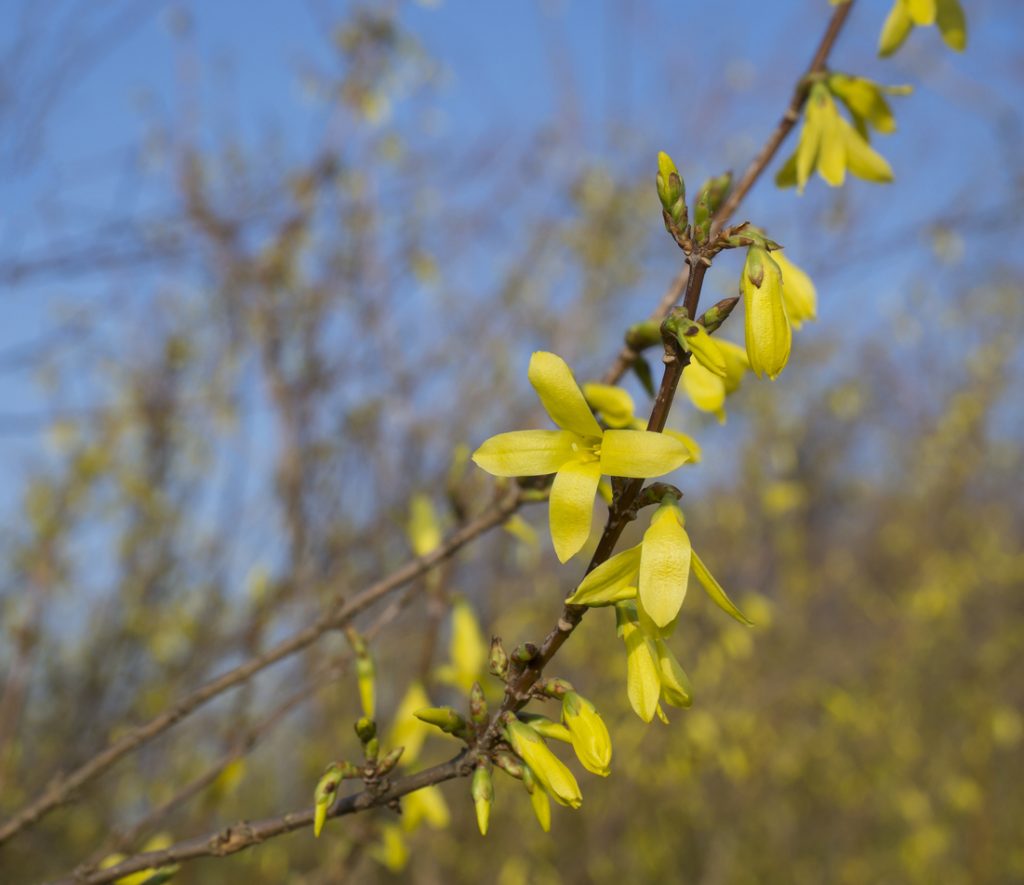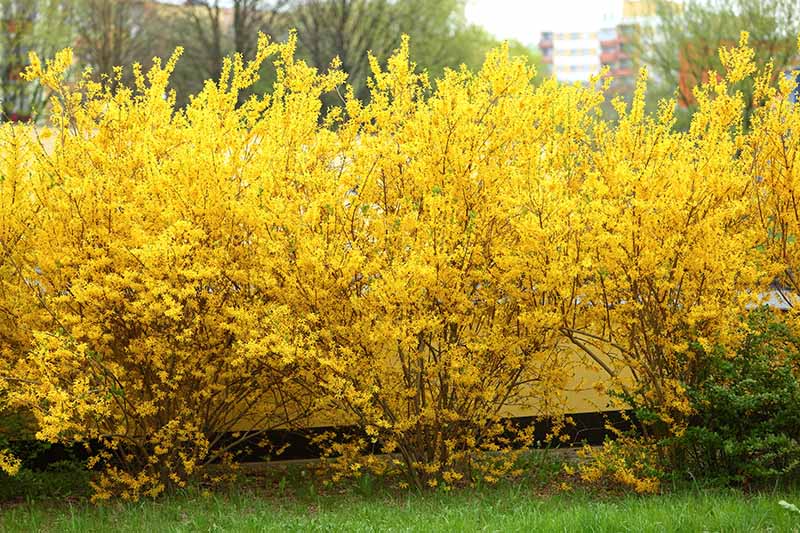Weeping Forsythia: The Early Spring Bloomer That's Sure To
Weeping Forsythia: The Early Spring Bloomer That's Sure to Brighten Your Day
Forsythia is a genus of deciduous flowering shrubs that are native to eastern Asia. They are known for their bright yellow flowers that bloom in early spring, often before the leaves have even emerged. Weeping forsythia is a type of forsythia that has gracefully arching branches that are covered in flowers. It is a popular choice for gardeners because it is easy to care for and it provides a stunning display of color in the early spring.
In this blog post, we will discuss the following:
- The different types of weeping forsythia
- How to plant and care for weeping forsythia
- How to propagate weeping forsythia
- How to prevent pests and diseases
- Where to buy weeping forsythia
Types of Weeping Forsythia
There are several different types of weeping forsythia available, each with its own unique characteristics. Some of the most popular types include:
- Forsythia suspensa: This is the most common type of weeping forsythia. It has long, arching branches that are covered in bright yellow flowers in early spring.
- Forsythia viridissima: This type of weeping forsythia has green leaves and yellow flowers. It blooms later than other types of weeping forsythia, but it can also be pruned to keep it smaller.
- Forsythia ‘Lynwood Gold’: This type of weeping forsythia has bright yellow flowers that are larger than the flowers of other types of weeping forsythia. It is a good choice for gardeners who want a more dramatic display of color.
- Forsythia ‘Spring Glory’: This type of weeping forsythia has a long bloom time, from early to late spring. It is a good choice for gardeners who want to enjoy the flowers for as long as possible.
Planting and Caring for Weeping Forsythia
Weeping forsythia is a relatively easy plant to care for. It prefers full sun and well-draining soil. It is drought-tolerant once established, but it will benefit from regular watering during the first year after planting.
Weeping forsythia does not need to be pruned heavily. A light pruning in late winter or early spring will help to keep the plant in shape and encourage new growth.
Propagating Weeping Forsythia
Weeping forsythia can be propagated by cuttings or by layering. Cuttings should be taken in late summer or early fall. Layering can be done in the spring or fall.
Preventing Pests and Diseases
Weeping forsythia is relatively resistant to pests and diseases. However, it can be susceptible to aphids, scale, and powdery mildew. If you see any pests or diseases on your weeping forsythia, treat them immediately with an appropriate insecticide or fungicide.
Where to Buy Weeping Forsythia
Weeping forsythia is available at most garden centers. You can also buy it online.
Conclusion
Weeping forsythia is a beautiful and easy-care shrub that is sure to brighten your day in the early spring. If you are looking for a plant that will add a splash of color to your landscape, weeping forsythia is a great choice.
Weeping forsythia is a beautiful shrub that is known for its bright yellow flowers that bloom in late winter or early spring. It is a popular choice for gardeners because it is easy to care for and it can add a touch of color to your landscape during the dreary winter months.
If you are interested in learning more about weeping forsythia, I recommend visiting Garden Wiki. This website has a wealth of information about the plant, including its history, growing requirements, and care tips. You can also find photos and videos of weeping forsythia in bloom.
I hope you enjoy learning more about weeping forsythia!
FAQ of weeping forsythia
Q: What is weeping forsythia?
A: Weeping forsythia is a deciduous shrub that is known for its bright yellow flowers that bloom in early spring. It is a member of the olive family, and its scientific name is Forsythia suspensa. Weeping forsythia can grow up to 10 feet tall and 6 feet wide, and it has long, drooping branches.
Q: How do I care for weeping forsythia?
A: Weeping forsythia is a relatively easy plant to care for. It prefers full sun, but it can tolerate partial shade. It also prefers well-drained soil. Weeping forsythia does not need to be watered very often, but it is important to water it deeply during the summer months. Fertilize weeping forsythia in the spring with a balanced fertilizer.
Q: How do I propagate weeping forsythia?
A: Weeping forsythia can be propagated by cuttings. Take cuttings in the spring or summer from healthy, new growth. The cuttings should be about 4 inches long and have at least two nodes. Dip the cuttings in rooting hormone and plant them in a well-drained potting mix. Keep the potting mix moist, and the cuttings should root in about 4-6 weeks.
Q: How do I prune weeping forsythia?
A: Weeping forsythia should be pruned in the spring after it has finished blooming. Prune away any dead, damaged, or diseased branches. You can also prune weeping forsythia to shape it or to keep it from getting too large.
Q: What are some common problems with weeping forsythia?
A: Some common problems with weeping forsythia include:
- Leaf spot: This is a fungal disease that causes brown or black spots on the leaves.
- Powdery mildew: This is a fungal disease that causes a white powdery coating on the leaves.
- Scale insects: These insects can suck the sap from the leaves and branches, causing them to wilt and die.
- Aphids: These insects can also suck the sap from the leaves and branches, causing them to wilt and die.
Image of weeping forsythia
- Image 1: A weeping forsythia tree in full bloom, with its bright yellow flowers cascading down over the branches.

- Image 2: A close-up of the flowers of a weeping forsythia, showing their delicate petals and golden yellow color.

- Image 3: A weeping forsythia in a garden, with its branches reaching out over a walkway.

- Image 4: A weeping forsythia in a pot, on a patio or balcony.

- Image 5: A weeping forsythia in the winter, with its bare branches silhouetted against the sky.

Post a Comment for "Weeping Forsythia: The Early Spring Bloomer That's Sure To"